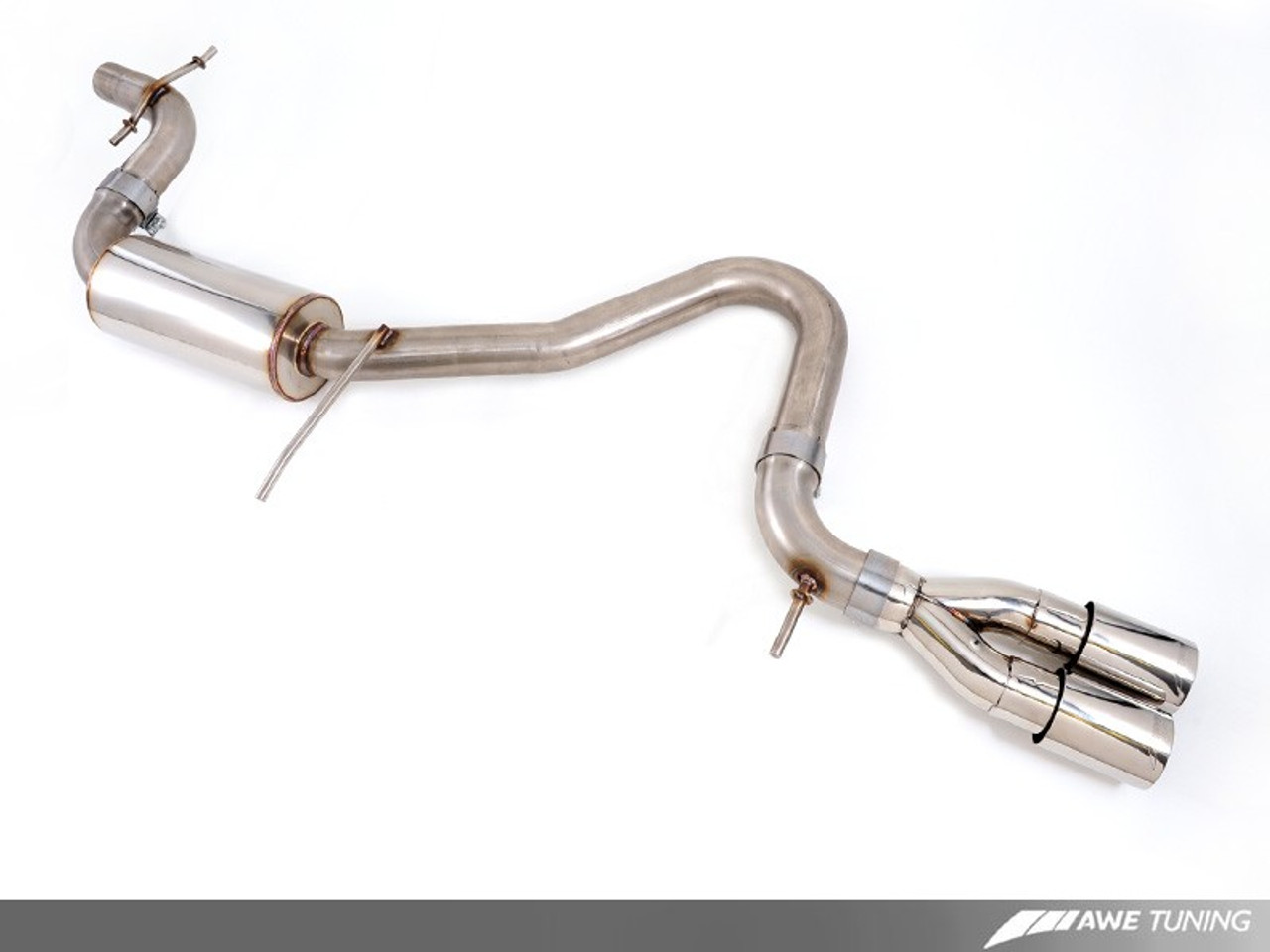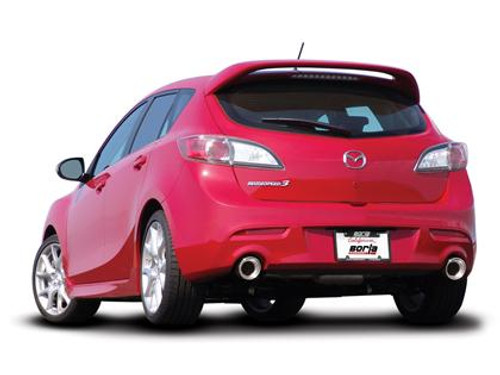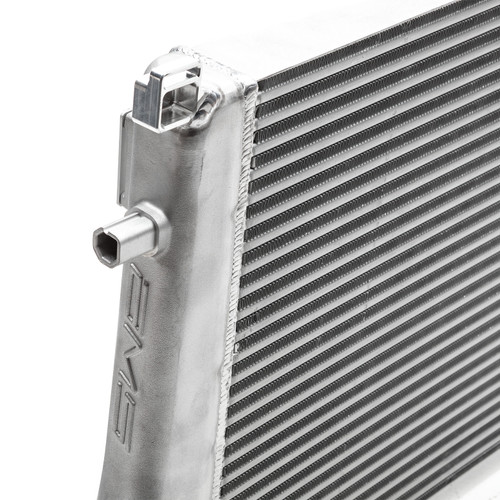Product Description
A3 performance lives here.
Here are some features of our exhaust system. Each feature was chosen for performance and longevity reasons, and when making your exhaust decisions you should settle for nothing less:
- Fully mandrel bent tubing
- Thick .065" wall T304 stainless steel tubing
- Stainless steel internal muffler and resonator construction
- Stainless steel MIG and TIG welds
- Stainless steel T-bolt clamps
- Double-walled exhaust tips to reduce heat discoloration
- Included OEM turbo to downpipe gasket
- In-house dyno-developed
The catback system is topped off with our signature 3.15" beveled exhaust tips. The tips sport laser-etched AWE Tuning logos and are double-walled to ensure a mirror polish even under hard usage. The system has multiple slip joints with high-quality t-bolt clamps, to allow optimal adjustment.
Our catback systems will mate up to the stock downpipe, and any downpipe designed to mate to the factory exhaust.
Why did we choose 2.5 inch and not 3.0 inch diameter for our A3 exhaust? Our first prototypes of this system were indeed 3.0 inch, but we found that the effort it took to move the large mass of air in the 3.0 inch system at lower rpms resulted in a loss of torque with very little offsetting gain up top. Take a look at our 3.0 inch prototype dyno sheets in the Performance Specs tab and see why a 3.0 inch system is not appropriate for this car.
AWE Tuning 2.0T Exhaust Dyno Tests
Below are comparision dyno tests as performed on our Mustang MD-500-SE AWD dyno.
All tests were performed on the same car, with controlled ambient conditions. Each test is average of 3 runs performed.
Cat Back Exhaust Testing
Our first prototype for the A3/GTI/GLI was a 3" diameter cat back system. Careful before and after dyno testing showed that for this car, bigger was definitely not better. The air mass found inside the 3" tubing proved to be a restriction to the engine until the higher rpm region, and even at that point gains were minimal. Our reputation is to bring only proven products to market, and a 3" system is definitely not the wise choice for power on this car. Design was rejected.
After further dyno testing, we found that a 2.50" diameter gave the best overall balance of torque and horsepower gains. Peak gain were 3.1whp and 0.1wtq.
In the graphed gains sheet below you'll find the measured differences between baseline and test in dyno sheet of AWE Tuning 2.50" Cat Back Dyno Test vs stock exhaust. The AWE Tuning 2.50" exhaust produces a maximum increase of 4 wheel hp at 5300 rpms and 28 wheel torque at 2400 rpms vs. the stock exhaust. Overall, gains are seen over practically the entire powerband.
3 inch Cat Back Dyno Sheet

2.5 inch Cat Back Dyno Sheet

2.5 inch Graphed Gains

Turbo Back Exhaust Testing
In the interest of accurate data, we conducted careful tests with our downpipe design. As we saw with our cat back testing, a 3" inch design is absolutely too large for this vehicle. We even tested with an aggressive G.I.A.C. X-Chip installed in the vehicle, to simulate the kind of power levels that most people will choose for their vehicle. Even with the extra power of the performance chip, 3" diameter tubing was too much air mass for the engine to move, resulting in a clear disadvantage compared to the 2.50" turbo back design.
Intake temps were closely monitored for the test. It is extremely difficult to obtain exactly the same test conditions run after run, and we found that the 3" tests were done with a slightly cooler intake air temp. Even with this advantage, the 3" design could not make as much power at the 2.50". Identical cell count cats were used for both tests, and the same chip file was in the vehicle for both tests. The tests were done on the same day and on the same car, just as they were with the cat back tests above.
2.50" diameter gives the best overall balance of torque and horsepower gains. Peak gains for the 2.50" system were ~20 crank hp and 14 ftlbs crank torque over the stock turbo back exhaust, while the 3" system could only muster ~9 crank hp and 1.5 ftlbs crank torque over the stock turbo back exhaust. There was no debate on what diameter worked better at this power level.
2.5 vs 3 inch Turbo Back Dyno Sheet

2.5 vs 3 inch Turbo Back Graphed Differences

2.5 vs stock Turbo Back Dyno Sheet

2.5 vs stock Turbo Back Graphed Differences


| Make | Model | Year | Submodel | Engine | Drivetrain | Transmission |
|---|---|---|---|---|---|---|
| AUDI | A3 | 2005 | BASE | 2.0L TURBO | FWD | FITS ANY TRANSMISSION |
| AUDI | A3 | 2006 | BASE | 2.0L TURBO | FWD | DSG |
| AUDI | A3 | 2006 | BASE | 2.0L TURBO | FWD | MANUAL |
| AUDI | A3 | 2007 | BASE | 2.0L TURBO | FWD | DSG |
| AUDI | A3 | 2007 | BASE | 2.0L TURBO | FWD | FITS ANY TRANSMISSION |
| AUDI | A3 | 2007 | BASE | 2.0L TURBO | FWD | MANUAL |
| AUDI | A3 | 2008 | BASE | 2.0L TURBO | FWD | FITS ANY TRANSMISSION |
| AUDI | A3 | 2009 | BASE | 2.0L TURBO | FWD | DSG |
| AUDI | A3 | 2009 | BASE | 2.0L TURBO | FWD | MANUAL |
| AUDI | A3 | 2010 | BASE | 2.0L TURBO | FWD | DSG |
| AUDI | A3 | 2010 | BASE | 2.0L TURBO | FWD | MANUAL |
| AUDI | A3 | 2011 | BASE | 2.0L TURBO | FWD | DSG |
| AUDI | A3 | 2011 | BASE | 2.0L TURBO | FWD | MANUAL |
| AUDI | A3 | 2012 | BASE | 2.0L TURBO | FWD | DSG |
| AUDI | A3 | 2012 | BASE | 2.0L TURBO | FWD | MANUAL |
| AUDI | A3 | 2013 | BASE | 2.0L TURBO | FWD | MANUAL |
| AUDI | A3 | 2013 | BASE | 2.0L TURBO | FWD | S TRONIC |















